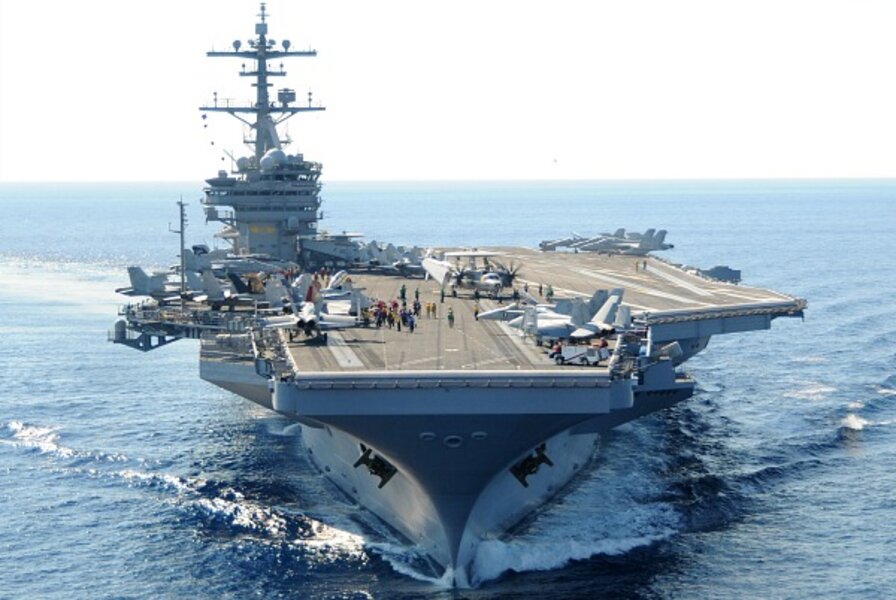US naval power steams toward Iraq
Loading...
Nothing tells an adversary “better be careful” or – in the case of friendlier nations – says “we’ve got you covered” like a US aircraft carrier lurking offshore just over the horizon.
Such is the case with the USS George H.W. Bush, a nuclear-powered and heavily-armed carrier ordered into the Persian Gulf to protect US interests as Iraq’s government and military seem unable to prevent cities there from being overrun by Islamist insurgents.
Accompanying the carrier are the guided-missile cruiser USS Philippine Sea and the guided-missile destroyer USS Truxtun, both of which carry Tomahawk cruise missiles.
Commissioned just five years ago, the USS Bush – call sign “Avenger” (the kind of aircraft the first president Bush flew in World War II) – is the tenth and final Nimitz-class supercarrier. It’s powered by two nuclear reactors and carries a crew of about 6,000 sailors.
Aircraft aboard the USS Bush include four fighter-attack squadrons flying F-18 Hornets and Super Hornets, a tactical electronics warfare squadron, a carrier airborne early warning squadron, a fleet logistics support squadron, a helicopter maritime strike squadron, and a helicopter sea combat squadron.
Following Defense Secretary Chuck Hagel’s order, the ships were expected to complete their move into the Gulf late Saturday.
"The order will provide the Commander-in-Chief additional flexibility should military options be required to protect American lives, citizens and interests in Iraq," the Pentagon said in a statement.
The US keeps a small military force in Iraq, mainly US Marines to protect the US embassy – the largest US diplomatic outpost in the world – and its roughly 5,000 personnel, plus three consulates in Basra, Irbil, and Kirkuk.
At this point, it’s unclear how much help the US could or would provide the government of Iraqi Prime Minister Nouri al-Maliki in engaging militarily with militants of the Islamic State of Iraq and the Levant (ISIS), now holding major cities in Iraq and moving toward the outskirts of Baghdad.
"Militarily, it doesn’t seem likely that Maliki’s forces, even with some US help, will be able to regain the lost areas anytime soon,” says Duke Law School professor Charlie Dunlap, a retired US Air Force major general who specializes in warfare policy and strategy. “It will be all they can do to hold on to Baghdad and the Shiite regions to the south."
"Vice President Biden’s much-disparaged proposal for a federated Iraq assembled from regions divided along Sunni, Shiite and Kurdish lines might need to be dusted off as it may be the best we can realistically hope for at this point,” says professor Dunlap. “But even that is a long shot for several reasons, most of all because a Sunni entity dominated by ISIS would be – and should be – unacceptable."
"This is another international crisis where the Obama administration has no good alternatives,” he says.
In a statement Friday, Obama made it clear that any US assistance to Iraq would be contingent upon the Maliki government taking meaningful steps toward political unity and sectarian reconciliation.
“Any action we may take to provide assistance to Iraq’s security forces has to be joined by a serious and sincere effort by Iraq’s leaders to set aside sectarian differences, to provide stability and to account for the legitimate interests of all of Iraq’s communities,” the president said.
Given the history of the past decade – Iraqi history and US history – that’s a very tall order. Meanwhile, three of the most powerful warships in the world are headed into that troubled neighborhood.








